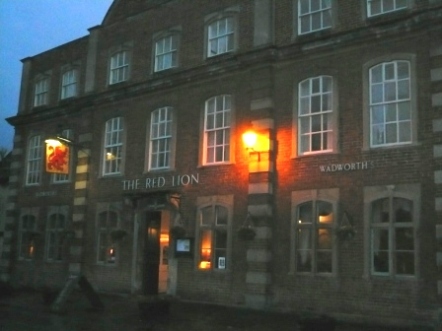From Bath, I took a 4-hour afternoon excursion out to the Stonehenge and Lacock Village on a Mad Max Tour. Stonehenge, I’ve always wanted to see, but Lacock is a serendipity. I joined a small group of 9 other visitors in a mini-bus parked across the Bath Abbey. As soon as he stepped into the bus, our guide and driver Charles clarified that he wasn’t Mad Max. The Bath family-run tour company was named after owner Maddy and her dog Max. On top of this piece of crucial local tidbit, Charles was most helpful in furnishing us with all sorts of information we ever wanted to know and ask about the Cotswold area and our destinations.
I’m debating whether I should post pictures up here because any picture of the Stonehenge would seem like a visual cliche, for it’s probably one of the most recognizable stone arrangements in the world. However, mine are different, I thought, not for artistic value, but mainly because they are taken by me personally, and not from any postcards, or downloads from the Internet. So here they are, Arti’s contribution to the photo world, two more pictures of the Stonehenge.
The ride out to the Stonehenge from Bath was about 60 minutes. The day was December 2, 2007. It was very, very windy and cold that day out in the open field where the Stonehenge was situated. Fortunately the rain let up a bit as we stepped out the mini-bus, giving me the chance to walk around the mysterious arrangements, in time to take about 20 pictures as I circumvented the site a couple of times. The audio guide was most helpful, but as I was confronted by the very sight, the sound seemed to fade into the background. I was busy taking my pictures, fighting against the fierce gale and the imminent threat of pouring rain. The what, the how, and the why of the Stonehenge remain a mystery to this day.
After an hour’s stay at the site, we hopped back onto the bus for our next destination: Lacock Village. Before the tour, I had not heard of this place. It was a serendipitous find…and a pleasant surprise indeed.
From Charles, we learned that Lacock, a National Trust medieval village preserved for its historical elements, is a popular spot for film productions. But before I give away all the films that has been made here, and actually, only a particualr one that I was most interested in, first here are a few shots of the Village. As we arrived, it was around 4 pm, but dusk had already set in. In the rain and cold wind, I was only able to take a few shots as I grabbed my umbrella under my arm. Looking at them now, they correspond closely to the time of day where the actual scene appears in the film. To enhance their visibility, I’ve lightened them a bit here.
Recognize these buildings? Imagine there were no cars and the road was not paved…
Yes, they were shots of Meryton in the BBC (1995) made for TV miniseries Pride And Prejudice…the ‘wet shirt’ version with Colin Firth, as Charles expertly informed us. Yes I know the version, I told him, my favorite. The Red Lion in the third picture was used as the exterior shot of the assembly room where the Meryton Ball took place in the beginning of the movie. That was when Darcy, Bingley, his sisters and Mr. Hurst got off the carriage to attend the country Ball in the evening, eyeing haughtily at their surroundings (except Bingley of course).
Other than Pride And Prejudice, Lacock was also the film location for Emma (BBC 1996), the Harry Potter movies, and most recently the new Harry Potter production (2008 ) by Warner Bros. on another street. But the Village of Lacock probably won’t be easily recogized in that movie because the facade of the buildings there had been changed for the filming. The 1995 BBC Pride And Prejudice production used the authentic buildings as they appear in the above photos. I recognized them as soon as I turned into the street that late afternoon,…adding a serendipitous Austen touch to my Mad Max excursion.
The photos you see in this post are taken by Arti of www.rippleeffects.wordpress.com. December, 2007. All Rights Reserved.
If you see them and/or any parts of the texts in a site other than Ripple Effects, then you know they have been copied without permission. I thank my readers for alerting me in the past, and I continue to appreciate their watchful eyes in the future.






